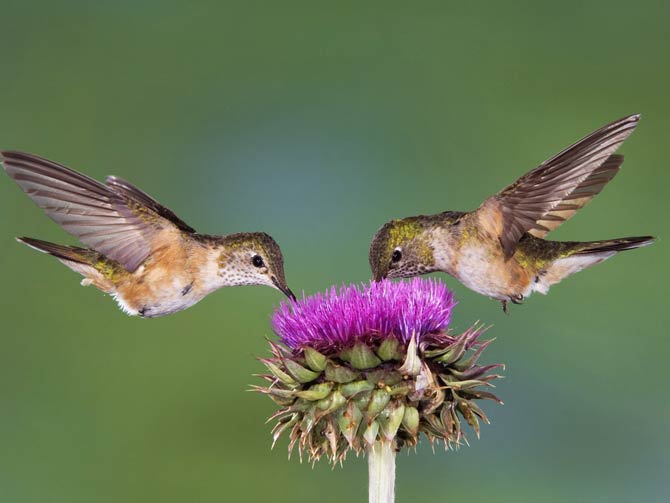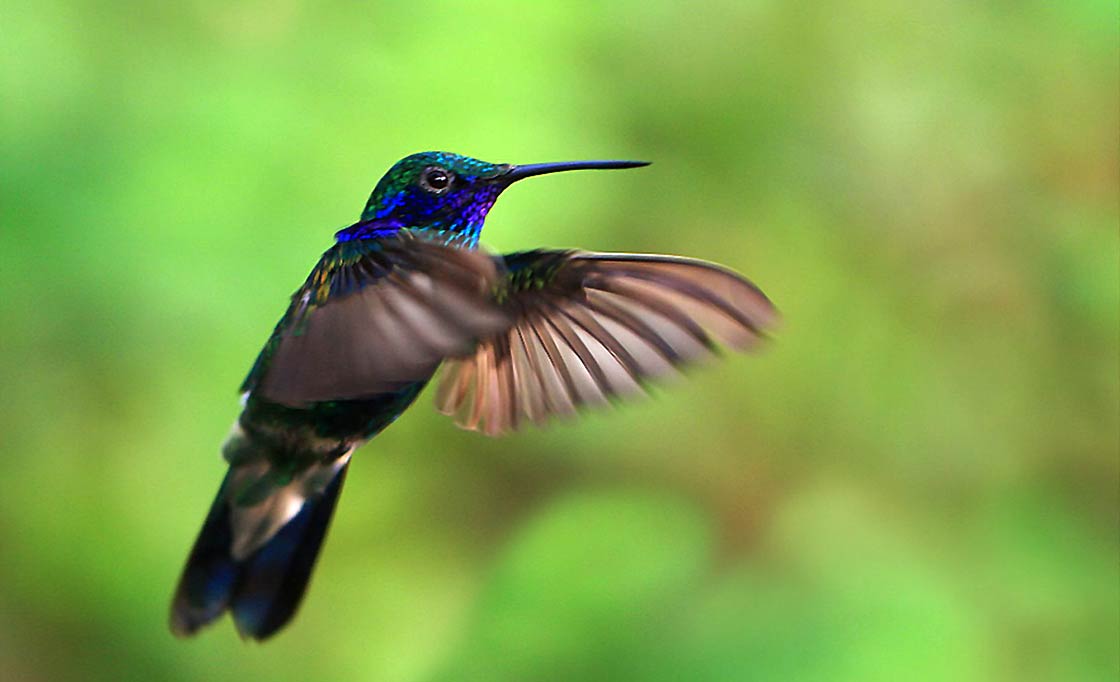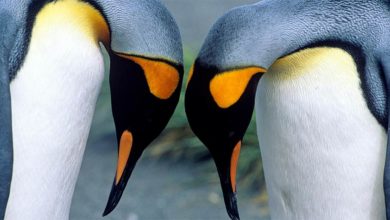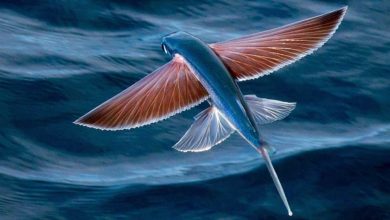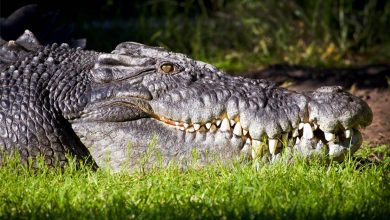Hummingbirds – the smallest and one of the fastest birds
Hummingbirds (Trochilidae), along with swifts, belong to the order. Some species migrate during the winter, during which they can fly up to 8,000 km. They are also the only birds that can fly backwards. Hummingbirds are small birds. The sizes of members of the family vary from 5 to 22 cm (2 – 9 in). Most species have an average size of 6-12 cm (2. 4 – 4.7 in) and a body weight of 2.5-6.5 g (according to other sources, 3-7 g). The lightest hummingbirds – the Reddish hermit (Phaethornis ruber) from Guyana and Brazil and the Bee hummingbird (Mellisuga helenae) from Cuba – weigh 1.6-2.6 g , and the heaviest – the giant hummingbird (Patagona gigas) – 18–24 g.
Classification
- Kingdom: Animalia
- Phylum: Chordata
- Class: Aves
- Order: Apodiformes
- Family: Trochilidae
- Subfamilies:
- Phaethornithinae
- Trochilinae
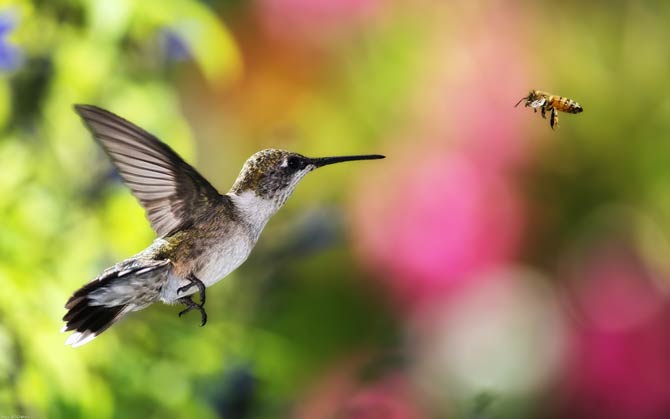
Occurrence
Hummingbirds are the smallest birds that live on Earth; due to their metallic shiny plumage, they are often called flying gems. Most of the 368 known species inhabit the tropics of the Americas, although they are also found in colder zones. Some hummingbirds have adapted to arid areas, where the vegetation cover is mainly made up of flowering cacti, while others are found only in green fields and arable lands.
The hummingbird range extends from the southern part of Alaska (North America) to the southern edge of South America in Tierra del Fuego. Some species are also found in the Caribbean.
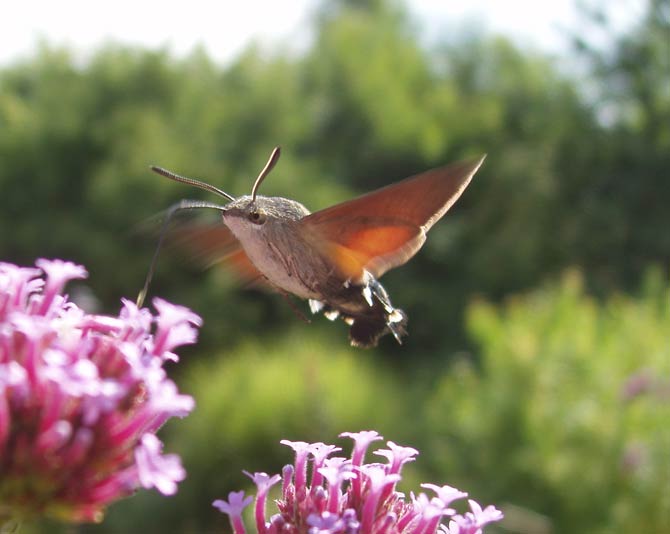
Hummingbird hawk-moth (Macroglossum stellatarum) – “European hummingbird”
There are no hummingbirds in Europe. However, one can get such an impression when (which happens relatively rarely) it is possible to observe the daytime moth that occurs in Europe – the Hummingbird hawk-moth (Macroglossum stellatarum). The Hummingbird hawk-moth has a wingspan of about 4–4.5 cm (1.6–1.8 in), and its behavior resembles a hummingbird, because it drinks nectar from the flower cups using a suction cup, while floating in the air.
Travels
Many hummingbirds travel long distances to warmer places during winter. During such migrations, hummingbirds can then travel great distances. Archilochus, for example, flies across the Gulf of Mexico (800 km) without rest.
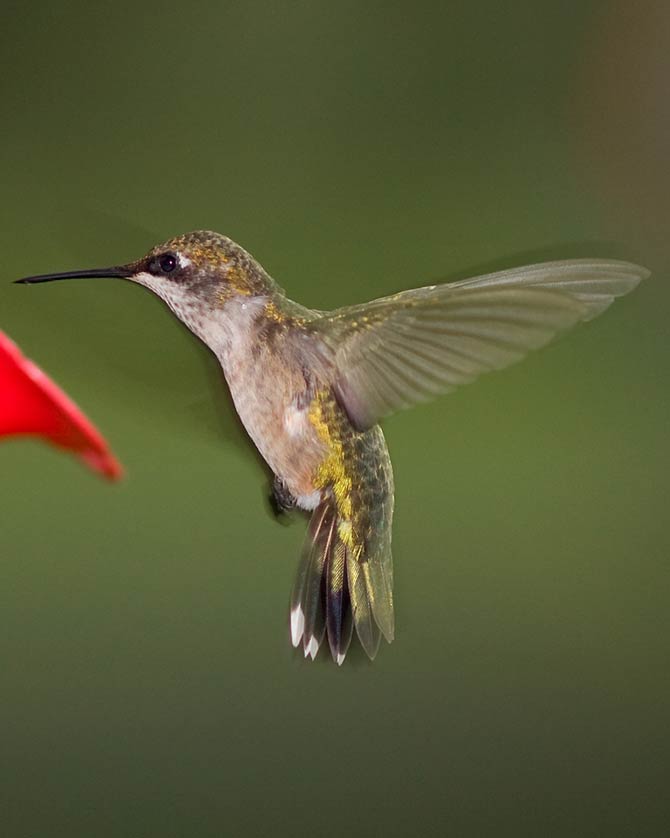
Characteristics
Hummingbirds have bright plumage, often with a metallic sheen. Its color depends on the microstructure of the feathers and changes under different lighting conditions. Some members of the family may have a well-defined crest or a kind of collar. The hummingbird’s not very long wings include ten developed primary feathers and six to seven shortened secondary feathers. The tail is usually half the length of folded wings and consists of ten tail feathers.
Hummingbirds are polygamous birds. The male is engaged only in fertilization , all other cares for raising offspring is taken by the female. Hummingbird nests are usually very small, the main material for the outer wall is lichens, mosses, cobwebs, leaves, roots, bark, and the inner layer is built from soft plant materials, feathers and hair.
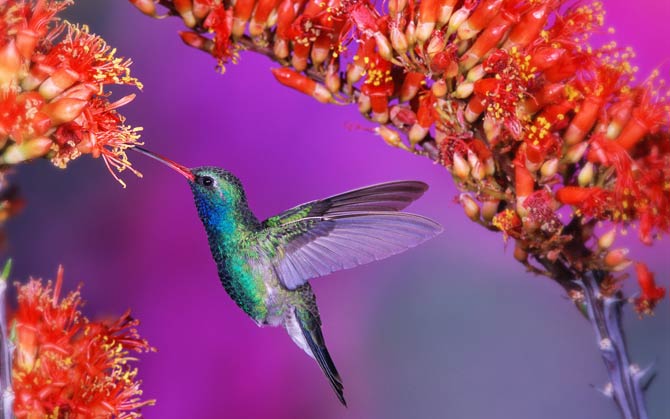
Meal
Hummingbirds spend most of their time in the air in search of nectar. They dip their long beaks into the flower crowns and lick the nectar with their long tongue. With every meal, pollen grains stick to the bird’s body, so hummingbirds play a role in pollinating flowers. Some species hunt small insects.
Flight
In the air, hummingbirds are extremely agile. They can suddenly stop their flight by hovering in place. Thanks to the unusual structure of the wings, they are the only birds that can fly backwards. The wing movements are so fast that they are almost invisible. However, this way of flying requires a lot of energy, so hummingbirds – when active – constantly eat. Hummingbirds can eat food twice their body weight per day.
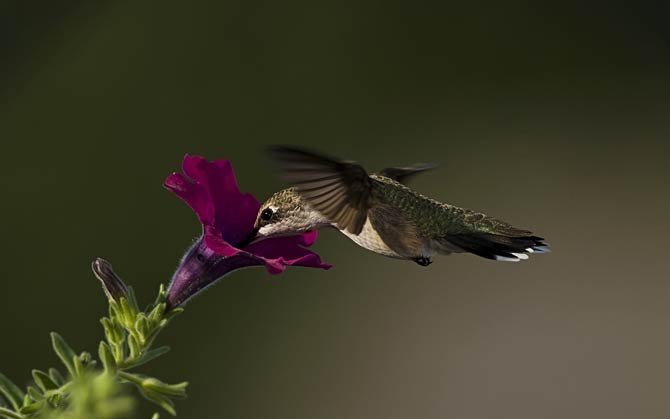
Lethargy at night
At nighttime, hummingbirds become numb, similar to lethargy. In this state, they use almost no energy – their body temperature can drop to almost the same level as their surroundings. During the night, their heart beats at a speed of 50 to 180 beats per minute, while during the daily activity it can reach up to 1,250 beats.
Sockets
Hummingbirds build nests mainly among the twigs of shrubs and lower trees. The nest looks like a tiny woven basket. To build it, hummingbirds use blades of grass, mosses and… spider threads.
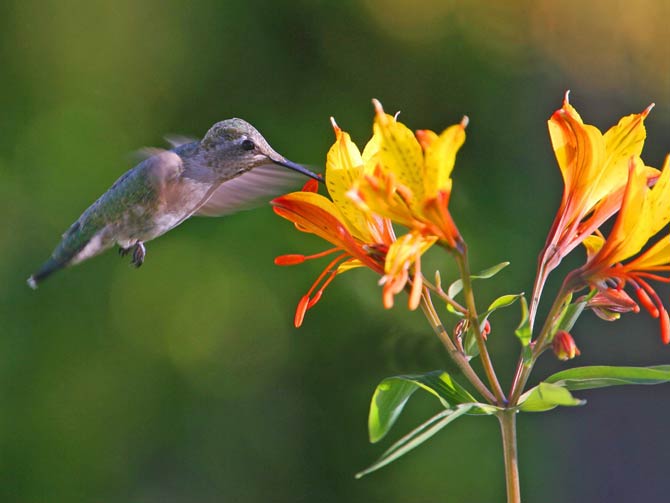
The smallest hummingbird
Bee hummingbird, zunzuncito or Helena hummingbird (Mellisuga helenae)
The Bee hummingbird is the smallest bird found on Earth. Its weight is approx. 1.9 grams and its length is approx. 5.5 cm, wingspan approx. 7.5 cm. It occurs in Cuba, hence its common name – Havanese. Another common name for it is Bumblebee.
- Weight:
- Females: 2.6 g (0.092 oz)
- Males: 1.95 g (0.069 oz)
- Length:
- Females: 1 cm (2.4 in)
- Males: 5 cm (2.2 in)
This hummingbird moves its wings at a speed of about 80 times per second. During one day, it can visit up to 1500 flowers. Its miniature nest is only 3 cm in diameter…
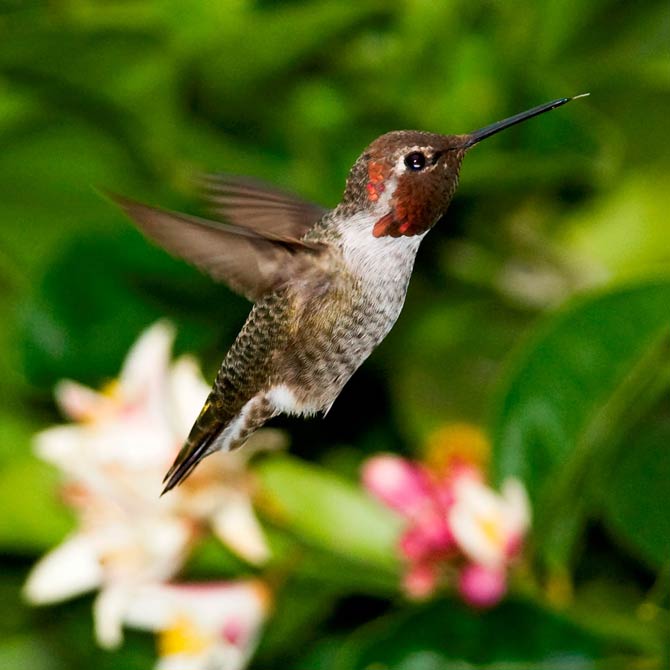
The largest hummingbird
The giant hummingbird (Patagona gigas)
It is the largest member of the hummingbird family. It occurs in South America.
- Its body length is approx. 21 – 23 cm (8.3 – 9.1 in)
- Wingspan 21 – 21.5 cm (8.3 – 8.5 in)
- Weight approx. 18–24 g (0.63–0.85 oz)
Its population is estimated at approx. 10,000 individuals. It is the only hummingbird whose wing movements are visible to the human eye.
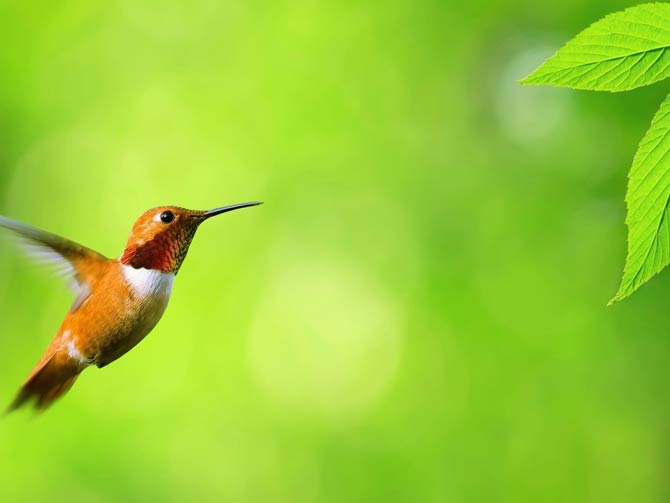
Hummingbirds – interesting facts
- A hummingbird’s wings may flutter at 200 beats per second when they are particularly active.
- The smaller the species, the greater the frequency of wing blows.
- Hummingbirds live up to 8 years.
- Under certain circumstances, some hummingbirds fly at 115 km/h (72 mph).
- The smallest of the hummingbirds is the Bumblebee, weighing only 1.9 – 2.6 g. Its length rarely exceeds 5 cm, half of which is for the beak and tail.
- The largest hummingbird is the giant hummingbird, reaching about 20 cm in length.
- One species, weighing only 4 grams, can travel 8,000 km (5,000 mile) in an uninterrupted journey
- A hummingbird’s heart beats 1000 times a minute, while the bird breathes about 250 times during this time.
- The breeding period of hummingbirds is linked to the flowering periods of the plants on which individual species feed.
